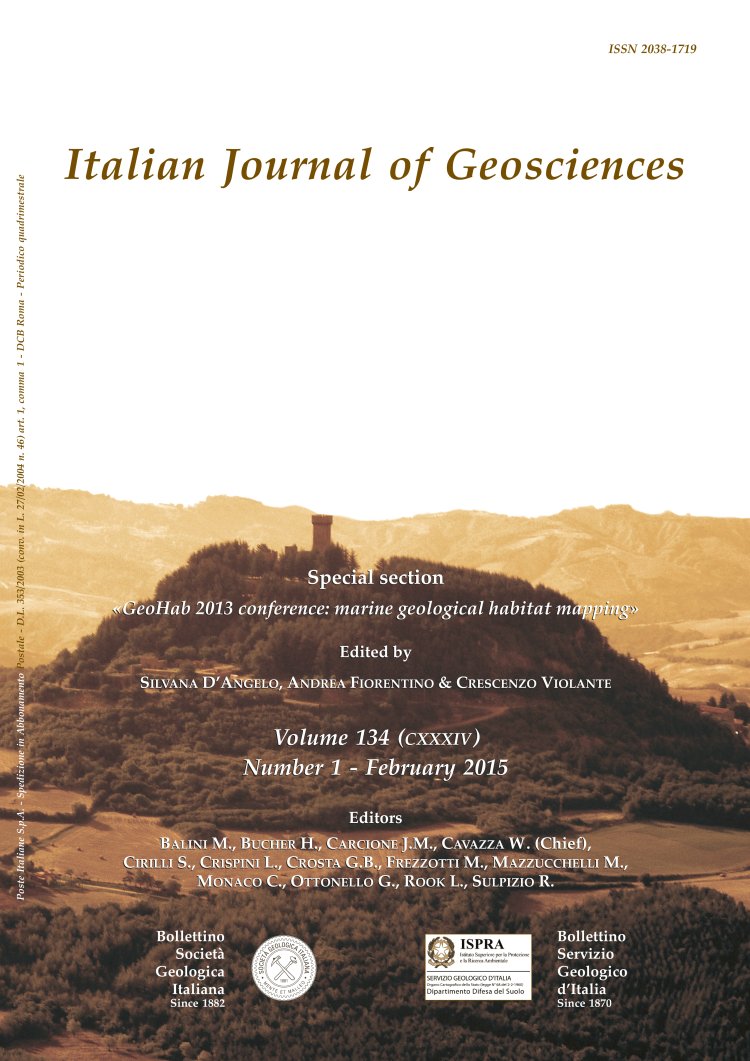
Preliminary data on habitat characterization relevance for red coral conservation and management
Alessandro Cau (*), Enrico M. Paliaga (*), Rita Cannas (*), Giacomo Deiana (**), Maria C. Follesa, Flavio Sacco (*), Samuele Todde (**) & Paolo E. Orrù (**)
(*) Dipartimento di Scienze della Vita e dell'Ambiente, Università di Cagliari. alessandrocau@unica.it
(**) Dipartimento di Scienze Chimiche e Geologiche, Università di Cagliari.
DOI: https://doi.org/10.3301/IJG.2014.40
Volume: 134 (2015) f.1
Pages: 60-68
Abstract
Through a non-invasive and interdisciplinary approach, distribution and size/age structure of deep dwelling populations of the precious red coral Corallium rubrum (LINNAEUS, 1758), were described in two different areas of the south Sardinia continental shelf: San Pietro Island and Capo Carbonara. Although its presence in south Sardinian waters is known, data on coral populations dwelling in deeper waters (below 50 meters of depth) are still represented by few studies. Data collected in the framework of the project "MaGIC" (Marine Geohazard along Italian Coasts), carried out in summer 2009 and spring 2010, furnished the guideline to map and identify rocky habitats (e.g. submarine canyons and outcrops) along the continental margin, which are suitable for red coral settlement. An extensive ROV survey, carried out in autumn 2011, provided useful information on occurrence, abundance, density and morphometric parameters of coral colonies. Red coral was found in both sites, distributed in patches, in different scenarios characterized by different habitat complexity. Over 1400 colonies were found in Capo Carbonara along the steep walls of a secondary channel of the Carbonara Canyon, while hundreds of specimens were found west of San Pietro Island along the outcrops ridges and on small boulders. Both populations were mainly composed by small and young colonies, while densities were different among sites, possibly affected by the role that habitat complexity plays in hydrodynamic and, consequently, on food supply, sedimentation, and settlement of colonies. These preliminary results contribute to advance knowledge on distribution and demography of deep dwelling populations of C.rubrum, which gain considerable importance in conservation and management of this precious resource. We strongly stress that interdisciplinary approaches that combines different scales of multibeam and ROV investigation are today fundamental to better understand distribution patterns within habitats, at species or community level.
Keywords
Get Full Text